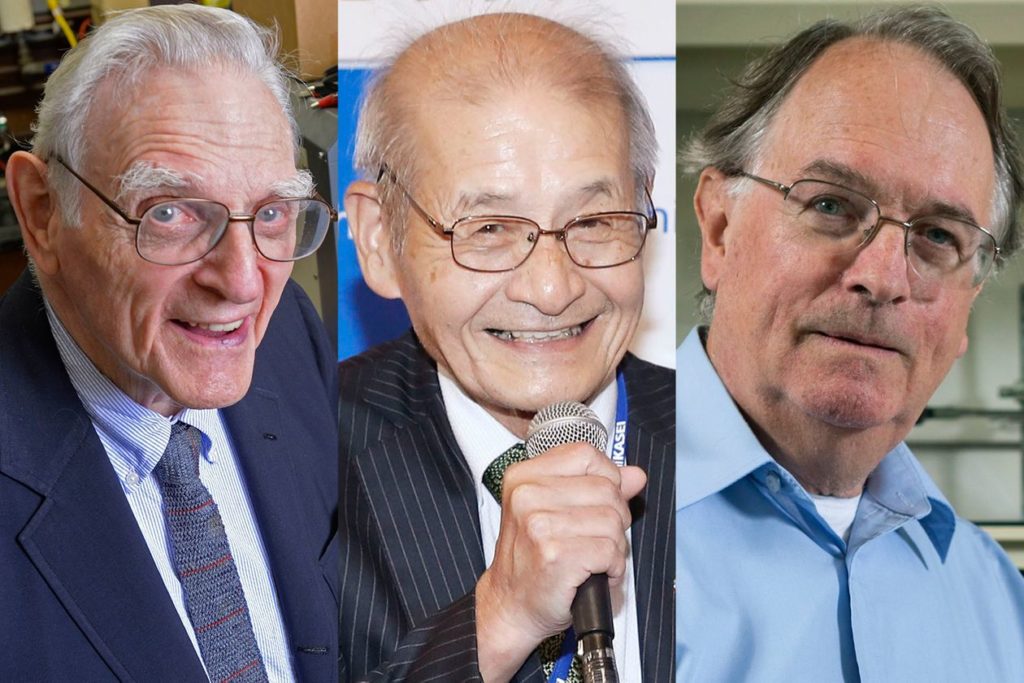The Royal Swedish Academy of Sciences has decided to award the Nobel Prize in Chemistry 2019 to John B. Goodenough, M. Stanley Whittingham and Akira Yoshino. The Nobel Prize in Chemistry 2019 rewards the development of the lithium-ion battery.
John B. Goodenough was born in Jena, Germany in 1922. He holds a Ph.D. from the University of Chicago, USA. Since 1986, he has been a professor in the school of engineering at The University of Texas at Austin, USA.
M. Stanley Whittingham was born in the UK in 1941. He graduated as Ph.D. from Oxford University, UK in 1968 and is Distinguished Professor at Binghamton University, State University of New York, USA.
Akira Yoshino was born in Suita, Japan in 1948. He is Honorary Fellow at Asahi Kasei Corporation, Tokyo, Japan and professor at Meijo University, Nagoya, Japan and holds a Ph.D from from Osaka University, Japan.

The foundation of the lithium-ion battery was laid during the oil crisis in the 1970s. Stanley Whittingham worked on developing methods that could lead to fossil fuel-free energy technologies. He started to research superconductors and discovered an extremely energy-rich material, which he used to create an innovative cathode in a lithium battery. This was made from titanium disulphide which, at a molecular level, has spaces that can house – intercalate – lithium ions. The battery’s anode was partially made from metallic lithium, which has a strong drive to release electrons. This resulted in a battery that literally had great potential, just over two volts. However, metallic lithium is reactive and the battery was too explosive to be viable.
John Goodenough predicted that the cathode would have even greater potential if it was made using a metal oxide instead of a metal sulphide. After a systematic search, in 1980 he demonstrated that cobalt oxide with intercalated lithium ions can produce as much as four volts. This was an important breakthrough and would lead to much more powerful batteries.
With Goodenough’s cathode as a basis, Akira Yoshino created the first commercially viable lithium-ion battery in 1985. Rather than using reactive lithium in the anode, he used petroleum coke, a carbon material that, like the cathode’s cobalt oxide, can intercalate lithium ions. The result was a lightweight, hardwearing battery that could be charged hundreds of times before its performance deteriorated. The advantage of lithium-ion batteries is that they are not based upon chemical reactions that break down the electrodes, but upon lithium ions flowing back and forth between the anode and cathode.
